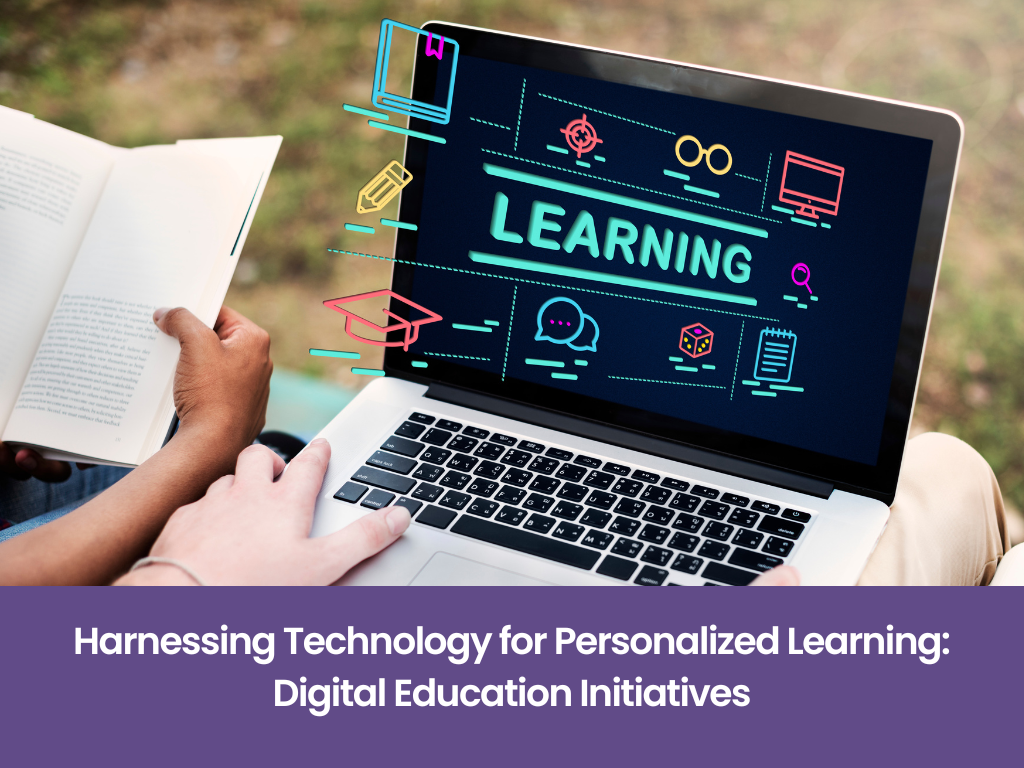Harnessing Technology for Personalized Learning: Digital Education Initiatives
posted on Mar 22, 2024
In the digital age, technology has transformed the landscape of education, offering new possibilities for personalized learning experiences tailored to the needs and preferences of individual students.

Introduction
In the digital age, technology has transformed the landscape of education, offering new possibilities for personalized learning experiences tailored to the needs and preferences of individual students. BGS Vijnatham School being one of the best school in Noida Extension, recognizes the potential of technology to enhance teaching and learning, empower students, and foster a culture of innovation and creativity. This article delves into the digital education initiatives undertaken by these institutions to harness technology for personalized learning and equip students with the skills and competencies needed to thrive in the 21st century.
The Evolution of Personalized Learning
Personalized learning refers to an instructional approach that customizes teaching methods, content, pace, and assessment to meet the unique needs, interests, and learning styles of individual students. It recognizes that every student is different and requires personalized support and opportunities for growth and success. With the advent of digital technologies, personalized learning has become more accessible and feasible, allowing educators to tailor instruction and provide targeted interventions based on real-time data and analytics.
Key elements of personalized learning include:
- Differentiated Instruction: Providing multiple pathways to learning and adapting instruction to accommodate diverse learning styles, preferences, and abilities.
- Individualized Learning Plans: Developing individualized learning plans for each student, setting goals, tracking progress, and adjusting instruction accordingly to meet their specific needs and aspirations.
- Flexible Learning Environments: Creating flexible learning environments that allow students to learn anytime, anywhere, and at their own pace, using a variety of digital tools and resources.
- Data-Driven Decision Making: Using data and analytics to monitor student progress, identify areas for improvement, and make informed instructional decisions that optimize learning outcomes.
Digital Education Initiatives
Schools have embraced digital education initiatives to harness technology for personalized learning and enhance the educational experience for students. Here are some of the key initiatives:
- 1:1 Device Programs: Schools implement 1:1 device programs, providing each student with access to a personal laptop, tablet, or mobile device equipped with educational software and internet connectivity. This ensures equitable access to technology and promotes anytime, anywhere learning opportunities.
- Blended Learning Models: Schools adopt blended learning models that combine traditional face-to-face instruction with online learning activities, simulations, and multimedia resources. Blended learning allows for greater flexibility and customization of learning experiences to meet the diverse needs of students.
- Learning Management Systems (LMS): Schools utilize learning management systems (LMS) to organize course materials, assignments, assessments, and communication channels in a centralized online platform. LMS platforms enable teachers to deliver content, track student progress, provide feedback, and facilitate collaboration in virtual learning environments.
- Adaptive Learning Platforms: Schools integrate adaptive learning platforms that use algorithms and artificial intelligence to personalize instruction based on students' learning preferences, strengths, and areas for improvement. Adaptive learning platforms adjust content, difficulty level, and pace in real-time to optimize learning outcomes for each student.
- Gamification and Interactive Content: Schools incorporate gamification elements and interactive content into lessons and assignments to engage students and enhance motivation and retention. Gamified learning activities, quizzes, simulations, and educational games make learning more immersive, interactive, and enjoyable.
- Personal Learning Paths: Schools develop personalized learning paths for students based on their interests, goals, and learning profiles. Personalized learning paths outline a sequence of activities, resources, and assessments tailored to each student's individual needs and preferences.
- Project-Based Learning: Schools emphasize project-based learning approaches that allow students to explore real-world problems, conduct research, collaborate with peers, and present their findings using digital tools and multimedia resources. Project-based learning fosters creativity, critical thinking, and problem-solving skills while promoting student autonomy and ownership of learning.
- Data Analytics and Assessment Tools: Schools leverage data analytics and assessment tools to monitor student progress, identify learning gaps, and provide targeted interventions. Data-driven decision-making enables teachers to customize instruction, track growth over time, and support students' academic success.
Impact and Future Directions
The implementation of digital education initiatives at BGS Vijnatham School has had a transformative impact on teaching and learning outcomes. Students demonstrate increased engagement, motivation, and achievement as they benefit from personalized learning experiences tailored to their individual needs and interests. Teachers develop innovative instructional practices and leverage technology to enhance their teaching effectiveness and facilitate student-centered learning environments. Looking ahead, schools aim to further innovate and expand their digital education initiatives by embracing emerging technologies, fostering collaboration among stakeholders, and promoting a culture of continuous improvement and innovation in education.
Conclusion
In conclusion, the school is at the forefront of harnessing technology for personalized learning, empowering students to become lifelong learners, critical thinkers, and innovators in the digital age. Through 1:1 device programs, blended learning models, adaptive learning platforms, gamification, project-based learning, and data-driven decision-making, these institutions are transforming the educational experience and preparing students for success in the 21st century. By embracing technology as a catalyst for personalized learning and innovation, its counterparts are shaping the future of education and empowering students to thrive in a rapidly changing world.